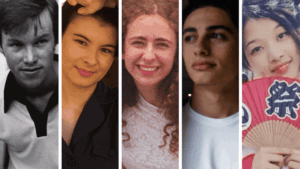
At the age of 33, Sharon Kirkwood first sensed something was amiss while playing netball. “Looking back, I do remember feeling just a little bit more uncoordinated than normal,” Sharon, now 41, recalls. Initially attributing the sensation to fatigue, she dismissed it as a sign of getting older. However, within two years, she found herself unable to walk or speak due to motor neurone disease (MND), a condition once rare among young people.
Sharon, a fit mother of two, was juggling a demanding teaching career and family life in Canberra. Her husband, Adam, worked full-time an hour away, leaving Sharon to manage long days and childcare. The initial limp she noticed in September 2017 soon escalated, prompting her to seek medical advice. Despite clear scans for multiple sclerosis and brain tumors, Sharon’s symptoms persisted, leading her to consult a neurologist.
Seeking Answers and a Diagnosis
During her first neurologist appointment, Sharon was told her symptoms were likely psychosomatic. “When tests didn’t find a cause for her weakening limbs, he told Sharon her symptoms were likely ‘psychosomatic’ and she should ‘try yoga and relax more,'” she recounts. Unconvinced, Sharon pursued a second opinion, which led her to an MND specialist. In April 2018, she received the diagnosis she feared but anticipated: motor neurone disease.
MND is a progressive neurological disorder that attacks the nerve cells controlling muscles used for movement, speech, breathing, and swallowing. As the nerves degenerate, muscles weaken and waste away, leading to complete paralysis. The disease is terminal, with most patients succumbing within two to five years of diagnosis. Notable figures like Stephen Hawking and Lou Gehrig have battled this condition.
Living with MND: Challenges and Adaptations
Sharon describes the initial years after her diagnosis as the most challenging. “I was still trying to live a relatively normal life – working, parenting, socialising and running the house on top of my many appointments,” she explains. Over time, she lost the ability to perform basic tasks independently, including walking, dressing, and even speaking.
Despite these losses, Sharon has adapted with the help of technology and a dedicated care team. She uses an ‘eye-gaze’ computer to communicate, converting eye movements into speech. “It’s not until you lose both your voice and use of your hands that you realise how important they are,” she notes.
The Emotional Impact on Family
Sharon’s diagnosis has also affected her family, particularly her young sons. “A few years ago, we were at the stage where my eldest had started to show signs at home and school that he was worried about me,” she says. Gradually, Sharon introduced the term MND to her children, explaining her condition as it progressed.
“MND is just so completely consuming. It impacts every part of my body and every aspect of my life.”
Advocacy and Raising Awareness
While there is currently no cure for MND, Sharon dedicates much of her time to raising awareness and supporting research. Her positive attitude remains unwavering. “I try to focus on finding things to be grateful for and I can find them every day,” she shares. Despite the challenges, Sharon cherishes moments with her family and refuses to let the disease take her positive outlook.
Sharon’s story is a poignant reminder of the resilience of the human spirit and the importance of continued research and awareness for conditions like MND. Her journey underscores the need for a deeper understanding of the disease and the hope for future breakthroughs that could change the lives of those affected.







